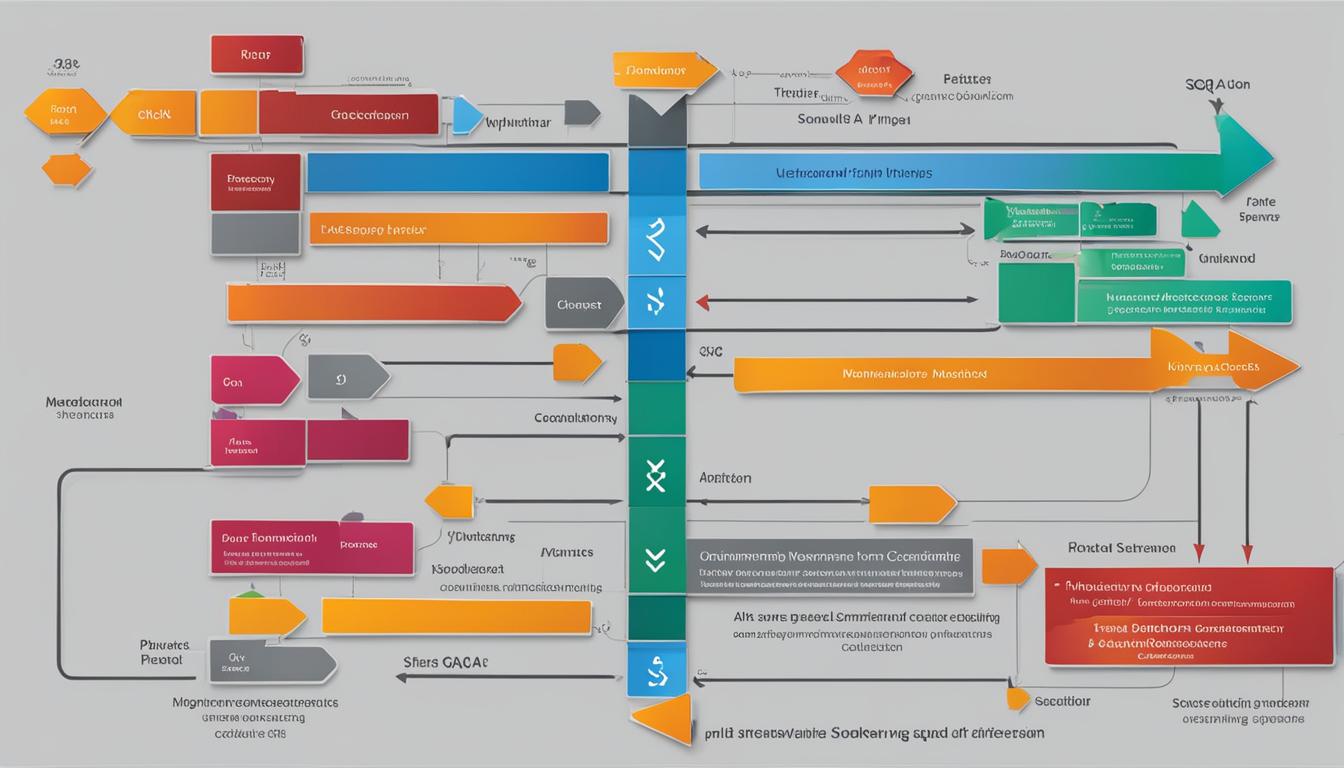In the realm of software quality assurance, we often find ourselves maneuvering through a complex labyrinth of challenging issues, each requiring a unique set of abilities to solve.
But why do we choose this path? Well, the reasons run deeper than mere job satisfaction.
As we unravel the layers of software testing, we uncover a multitude of compelling factors that drive our passion for this field.
Curious to explore the hidden gems that make software quality assurance an intriguing career choice?
Key Takeaways
- Software Quality Assurance ensures that product functionality and performance meet industry standards, preventing bad software from reaching customers and safeguarding the reputation of the company.
- Software Quality Assurance plays a crucial role in improving product quality, preventing faulty software, and enhancing development efficiency.
- Essential skills for Software Quality Assurance include analytical thinking, attention to detail, clear communication, adaptability, and problem-solving skills.
- Career opportunities in Software Quality Assurance are in high demand, with a shortage of qualified individuals. It offers satisfying work life, competitive pay, flexibility in career paths, and entry options.
Advantages of Software Quality Assurance
How do the advantages of Software Quality Assurance contribute to the overall improvement and quality of the product?
Software Quality Assurance (QA) testing plays a crucial role in ensuring that the product functionality and performance meet industry standards. By conducting rigorous QA testing, we can prevent bad software from reaching customers, thus safeguarding the reputation of the company and enhancing customer satisfaction.
This not only contributes to the overall improvement of the product but also elevates its quality, positioning it as a reliable and high-performing solution in the market. Moreover, the demand for professionals skilled in software quality assurance is high, offering rewarding career opportunities for those interested in this field.
From a broader perspective, the advantages of Software Quality Assurance extend beyond the product itself, as it also plays a crucial role in maintaining smooth workflows and processes within the organization. By prioritizing QA testing, we can identify and rectify potential issues early in the development cycle, ultimately leading to a more efficient and effective product development process.
The Impact of Software Quality Assurance

The advantages of Software Quality Assurance not only elevate the quality and reliability of a product but also have a profound impact on the overall efficiency and effectiveness of the development process. Software Testing, a critical aspect of SQA, plays an important role in ensuring that the software meets the required standards and specifications. It encompasses various types of testing, such as functional testing, performance testing, and security testing, to address the complexity of modern software systems. The table below provides a snapshot of the impact of Software Quality Assurance.
| Impact of Software Quality Assurance | Description |
|---|---|
| Product Quality Improvement | SQA ensures that the software meets quality standards, leading to higher customer satisfaction. |
| Career Opportunities | The demand for SQA professionals is high, offering rewarding career prospects and opportunities for growth. |
| Economic Growth | By ensuring the quality and reliability of software products, SQA attracts investments and encourages entrepreneurship. |
| Prevention of Bad Software | SQA prevents faulty software from reaching customers, maintaining the reputation of companies. |
| Overall Development Efficiency | SQA enhances the development process, leading to more efficient and effective software creation. |
The impact of Software Quality Assurance extends beyond product quality, influencing career opportunities, economic growth, and overall development efficiency.
Essential Skills for Software Quality Assurance
Acquiring a diverse set of technical and interpersonal skills is essential for excelling in the field of Software Quality Assurance. When it comes to essential skills for software quality assurance, the following are crucial:
- Analytical Thinking: A keen ability to analyze complex software systems and identify potential issues is paramount in software quality assurance. This involves breaking down intricate problems into manageable parts and devising effective testing strategies.
- Attention to Detail: Meticulously examining every aspect of the software ensures that no defects slip through the cracks. This skill is essential for identifying even the smallest of discrepancies that could impact the overall quality of the product.
- Clear Communication: Effective communication with team members and stakeholders is vital for conveying testing results, discussing potential issues, and collaborating on solutions. Clarity and precision in communication can significantly impact the efficiency of the software development process.
- Adaptability: Software testing problems vary across features and projects, requiring different perspectives and expectations. The ability to adapt to these variations and swiftly adjust testing strategies is crucial for ensuring comprehensive test coverage and the overall quality of the product.
Career Opportunities in Software Quality Assurance

Career opportunities in software quality assurance present a high demand for QA engineers and a shortage of qualified individuals, emphasizing the crucial role of QA engineers in preventing bad software from reaching customers.
As the software industry continues to expand, the need for skilled professionals who can ensure the quality and reliability of software products becomes increasingly critical. This high demand translates into a wide range of career opportunities for individuals interested in pursuing a path as a software tester.
The role of a QA engineer offers a satisfying work life and competitive pay, making it an attractive career choice. Furthermore, the diverse paths to becoming a QA engineer, including certification programs and self-teaching, provide flexibility for individuals from various backgrounds to enter this field.
Additionally, there are numerous software QA course options available for those looking to pursue a career in QA, offering a structured approach to gaining the necessary skills and knowledge.
Importance of Software Quality Assurance in Tech Industry
With the increasing demand for skilled professionals in software quality assurance, the importance of ensuring high-quality software products becomes increasingly critical in the tech industry. Our focus on software quality assurance is vital for several reasons:
- Ensuring high-quality software products: By meticulously testing and assessing software, we guarantee that it meets the highest standards of quality and functionality.
- Reducing the risk of bugs and issues in software: Through rigorous testing and analysis, we minimize the likelihood of software bugs and malfunctions, thus enhancing the overall reliability of the product.
- Enhancing customer satisfaction and trust: High-quality software leads to improved customer satisfaction and trust, fostering long-term relationships and loyalty.
- Meeting industry standards and regulations: Adhering to industry standards and regulations is paramount, and software quality assurance ensures that our products comply with these requirements.
In the competitive tech industry, the significance of software quality assurance can’t be overstated. It supports efficient and reliable software performance, ultimately contributing to the success and credibility of our products.
Frequently Asked Questions
Why Did You Choose Quality Assurance as a Career?
We chose quality assurance as a career due to our passion for solving unique testing problems and contributing to product improvement. The complexity of software testing, encompassing functionality, performance, and security, keeps us engaged.
Our continuous testing efforts aim to enhance the overall quality of software. Critiquing others’ work and understanding the customer’s perspective are fulfilling aspects of our career. We find satisfaction in resolving issues and perfecting testing methodologies.
Why Do You Want to Be a QA Interview Question?
We want to be QA because we value precision and excellence.
Our team ensures software quality, preventing defects and delivering top-notch products.
Our meticulous approach guarantees customer satisfaction and builds trust.
For instance, our rigorous testing uncovered critical issues, preventing a faulty release and saving the company’s reputation.
Our commitment to quality and attention to detail make us an invaluable asset in the tech industry.
What Is the Benefit of Software Quality Assurance?
Ensuring superior product quality and functionality, software quality assurance contributes to customer satisfaction, manages testing complexities, and improves overall product quality.
It fulfills the high demand for software QA engineers in the tech industry.
These benefits highlight the significance of software quality assurance in delivering reliable and efficient products.
Why Do You Think QA Is Important?
Ensuring excellence in software quality assurance is imperative for the success of any tech venture. It’s our duty to detect defects, deliver dependable products, and drive customer satisfaction.
Our meticulous approach guarantees reliability, resilience, and robustness in software. With our expertise, we mitigate risks, maintain momentum, and maximize market share.
Our dedication to quality assurance is unparalleled, and our impact is undeniable.
Conclusion
In conclusion, choosing a career in software quality assurance offers a multitude of advantages, including the opportunity to make a significant impact on the success of tech companies.
By honing essential skills and embracing continuous learning, we can ensure the quality and reliability of software products.
The demand for QA engineers provides ample career opportunities, and the satisfaction of resolving issues and contributing to product improvement makes it a highly rewarding choice.









